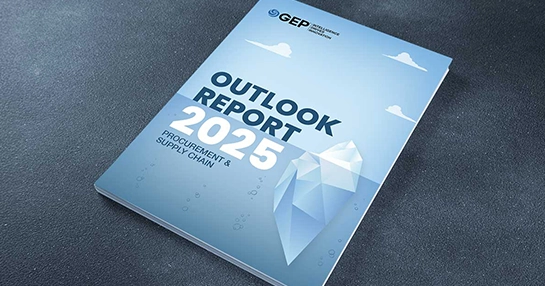
Are Purchase Orders Holding Back Procurement? Here’s How to Turn Them into a Strategic Procurement Tool
- Strategic leaders align PO types—standard, blanket, planned, or contract—with spend patterns, risk levels, and business goals to drive smarter procurement.
- AI-powered tools automate PO workflows, ensure compliance, and turn procurement data into insights that support agile, informed decisions.
- Managed with intent, POs become levers for efficiency, supplier alignment, and enterprise-wide value—not just paperwork.
October 30, 2025 | Procurement Strategy 5 minutes read
How much strategic value does your organization extract from its purchase order process? For many enterprises, purchase orders (POs) are viewed as mere transactional paperwork—necessary for compliance, but rarely considered as a source of competitive advantage. Yet, for procurement leaders and business executives, understanding and leveraging the distinct types of purchase orders is a powerful way to drive efficiency, control risk, and align procurement with broader business goals. The nuances of PO selection and management can have a direct impact on operational agility, supplier relationships, and the bottom line.
Ready to unlock the full value of your purchase order process?
Explore GEP’s AI-powered PO management solution now!
Standard Purchase Orders: Precision and Control for Discrete Needs
Standard purchase orders are the most familiar PO type—used for one-off, clearly defined purchases where quantity, price, and delivery timelines are all known at the time of order. For executives, the strategic value of standard POs lies in their clarity and auditability. Each order is a closed transaction, with a clear paper trail that supports robust spend analytics, compliance monitoring, and financial forecasting. However, over-reliance on standard POs for routine or repetitive purchases can introduce inefficiency. The administrative burden of generating, approving, and tracking numerous individual POs can slow down operations and distract procurement teams from higher-value activities. The key for leaders is to recognize when precision is necessary—and when it becomes a bottleneck.
Blanket Purchase Orders: Streamlining for Recurring Spend
Organizations use blanket purchase orders when they anticipate ongoing purchases from a single supplier over a set period but may not know the exact quantities or delivery schedules in advance. By consolidating multiple transactions under a single PO, blanket POs reduce administrative overhead, enable volume pricing negotiations, and simplify approval workflows.
From a strategic perspective, blanket POs are invaluable for categories like office supplies, maintenance services, or indirect materials—areas where demand is predictable, but individual orders are frequent and low in value. Executives should actively monitor blanket POs, with controls in place to prevent unauthorized purchases or scope creep. Regular reviews of blanket PO utilization can also reveal opportunities for supplier consolidation or renegotiation.
Planned Purchase Orders: Flexibility Coupled with Commitment
Planned purchase orders offer a hybrid approach—committing to a supplier relationship and pricing structure, while allowing for staggered releases as specific needs arise. Planned POs are particularly effective for project-based procurement, capital equipment, or categories with fluctuating demand. They provide the flexibility to adapt to changing requirements without renegotiating terms for every transaction.
For business leaders, the value of planned POs is twofold: they support better cash flow management by spreading out expenditures, and they foster closer collaboration with suppliers, who can plan production and inventory more effectively. However, planned POs require disciplined release management and regular communication to ensure that both parties remain aligned as project needs evolve.
Contract Purchase Orders: Frameworks for Strategic Sourcing
Contract purchase orders, often referred to as purchase agreements, establish the legal and commercial terms for future procurement activity with a supplier. Unlike standard or blanket POs, contract POs are not tied to a specific transaction; instead, they serve as a master framework under which subsequent orders are placed.
For executives, contract POs are a cornerstone of risk mitigation and strategic sourcing. They ensure that all purchases are governed by pre-negotiated terms—covering pricing, service levels, liability, and dispute resolution—reducing legal exposure and accelerating procurement cycle times. Contract POs are particularly valuable in industries with complex regulatory requirements or where supplier relationships are critical to business continuity.
Digital Transformation: AI and Automation in Purchase Order Management
The evolution of digital procurement platforms has fundamentally changed how organizations manage purchase orders. AI-driven systems now automate PO creation, match requisitions to the optimal PO type, and flag exceptions or anomalies in real time. This automation not only reduces manual effort but also ensures consistency and compliance across the organization.
AI-enabled analytics provides executives with a holistic view of procurement activity, identifying trends such as maverick spend, underutilized blanket POs, or opportunities for supplier consolidation. By integrating PO data with ERP, finance, and supply chain systems, organizations gain real-time visibility into spend, contract compliance, and supplier performance.
For business leaders, the strategic implications are significant. Procurement is no longer a back-office function—it becomes a source of actionable intelligence. AI can benchmark supplier performance, predict potential disruptions, and support scenario planning, enabling more informed, agile decision-making at the executive level.
When to Deploy Each PO Type: Key Considerations
The decision to use a particular type of purchase order should be driven by business objectives, risk appetite, and operational realities. Standard POs are best for high-value, discrete purchases where control and auditability are paramount. Blanket POs are ideal for high-frequency, low-value transactions that benefit from streamlined processing and volume discounts. Planned POs offer flexibility for project-driven or variable demand scenarios, while contract POs provide the governance needed for strategic supplier relationships and complex sourcing environments.
Executives should regularly review PO usage patterns to ensure alignment with business strategy. Are standard POs bogging down procurement with unnecessary paperwork? Are blanket POs being monitored to prevent overspend? Is the organization leveraging contract POs to lock in favorable terms and manage risk? These are not just operational questions—they are strategic levers that can impact profitability, agility, and competitive positioning.
Ready to Elevate Your Procurement Processes?
Discover how leading organizations are building smarter, more resilient procurement teams—starting with the right pillars.
Also Read: Why Your Business Needs a Purchase Order Application
Purchase Orders as Strategic Instruments
Purchase orders, when managed with intent and supported by advanced technology, are far more than an administrative necessity. They are instruments of control, value creation, and strategic alignment. By choosing the right PO type for each scenario—and leveraging AI and automation to optimize the process—business leaders can transform procurement from a transactional function into a driver of operational excellence and enterprise value.
The organizations that thrive are those that treat purchase orders not as paperwork, but as powerful tools for shaping supplier relationships, controlling spend, and delivering measurable business outcomes. The question for executives is simple: Are your POs working for you, or are you working for your POs?



